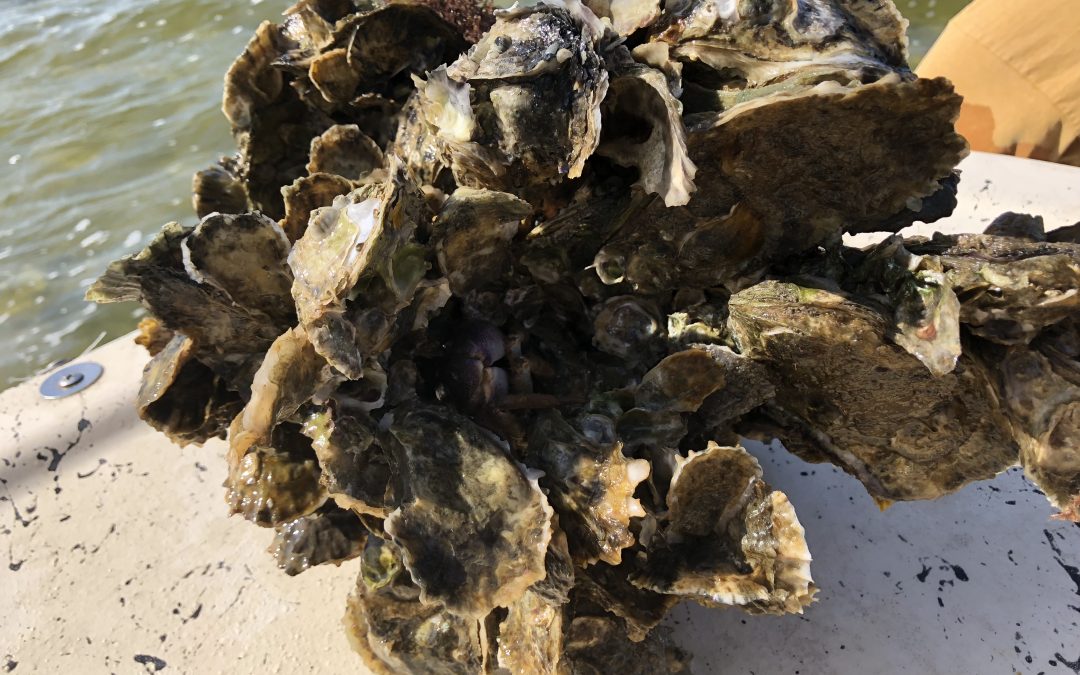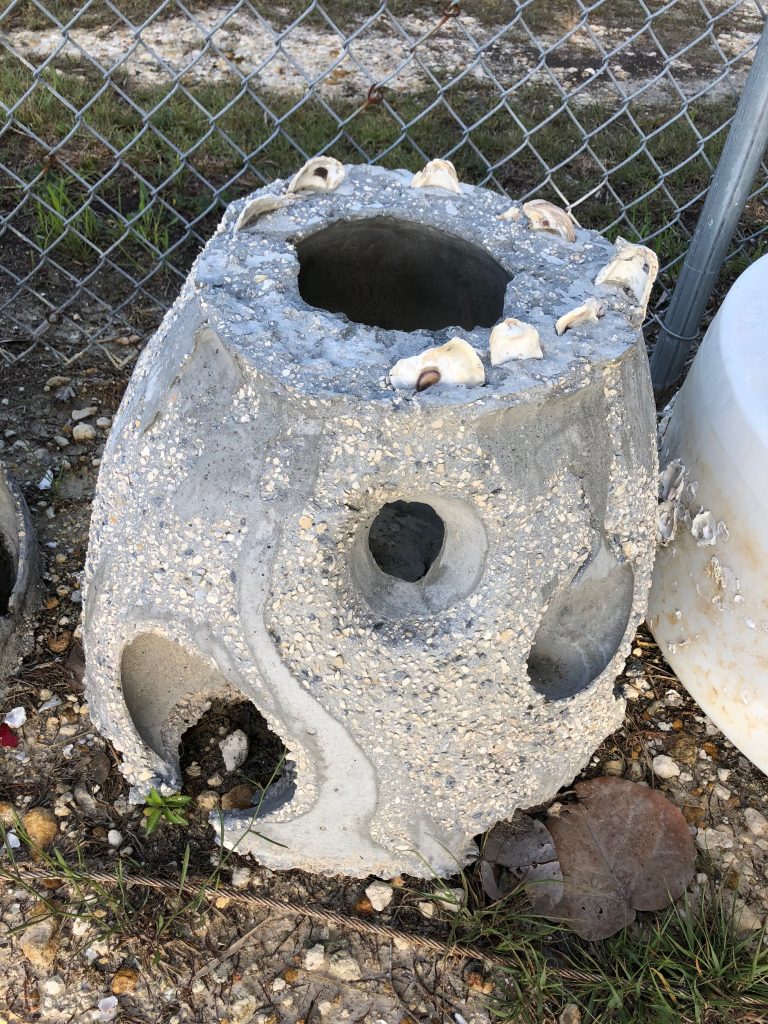When John Smith first boated across the Chesapeake Bay, he wrote about how the waters were crystal clear, the green vegetation swaying in the water, and plentiful amounts of fish his men thought they would be able to eat for years. This was the original Chesapeake Bay. Today, the Bay is the antithesis of John Smith’s description. Now, the water is a murky green, with mostly plastic swaying in the water, while fish and other marine creatures suffocate due to a lack of oxygen in the water. This is the reality of our Bay because of one tiny creature massive decline: the oyster.
Today, there has been a 99% decline in the oyster population. As such, only 1% remain. Why is this such a problem? First, it is important to understand what the oyster is: Oysters, specifically the Eastern oyster found in the Bay, can grow up to three to five inches in length, but can reach a length of eight inches. Their external body is comprised of two rough shells that protect its soft body and vary in color from white to gray to tan. The top shell is relatively flat, while the bottom shell is cupped to hold a purple muscle “scar” on the inside.
These little creatures are known as filter feeders, meaning they feed on plankton by opening their shells and pumping water through their gills. This action traps particles of food and gunk in the water, which essentially removes all sedimentation and negative particles from the water, thus filtering the Bay. The oyster could once filter a volume of water equal to that of the entire Bay (about 19 trillion gallons) in a week, improving water quality for other animals to live. However, because of their decline, it takes almost three years for the Bay to be completely filtered once.
But what is causing this dramatic decline? The problem is three-fold: overharvesting, disease, and of course, climate change. Historically, oysters have made up one of the region’s most valuable commercial fisheries and have been an ideal dinner meal. The Chesapeake Bay program even reports that “In the 1850s, more than 1.5 million bushels of oysters were harvested from the Bay each year; three decades later, this number jumped to 20 million.” This number becomes worse when fishermen use a tactic called dredging, a method involving a large net that drags on the bottom of the water and collects animals and particles that it is not meant to.
In terms of disease, most oysters are suffering from Dermo. This disease is transmitted from oyster to oyster and infects the digestive tissue, but in heavily infected oysters, it can even destroy tissues or clog the circulatory system. This causes slow growth rate and reduced reproductive potential, and ultimately death, commonly in the oyster’s second year of life.
One of the most least-known reasons oysters are in distress is also because of agricultural practices around the Bay. When locals over-fertilize their lawns or farmers lay down manure on their fields, elements that have excessive amounts of nutrients in them, and it rains, they all flush into the Bay. When these chemicals enter the Bay, large amounts of Phosphorus, Nitrogen, and solid sediments (SS) contaminate the Bay and create algae blooms. These bodies of algae suck up the oxygen in the area and create “dead zones,” zones where no animals can live because there is no oxygen in that area. The excessive amount of sediment can also suffocate oysters and other shellfish.
To overcome these challenges, states surrounding the bay have taken numerous steps. To tackle the problem of overharvesting, Maryland and Virginia have established organizations to manage harvesting numbers. In Virginia, the Marine Resources Commission. In Maryland, the Oyster Advisory Commission. There are also areas where fishermen are not allowed to fish, harvest, or dredge. These areas are called oyster sanctuaries. Scientists also have taken upon themselves to remove excessive sediment from the oysters, add recycled oyster shells, and monitor the reef to ensure its survival.
New research is continuously coming out of the Virginia Institute of Marine Science regarding the oyster disease. Maryland is found to have fewer disease problems since the water is typically cooler in the area; however, Virginia has warmer and saltier waters, as such, disease is much more prone. This is not entirely a bad thing, though, research has found. According to the latest research, “oysters subject to high disease pressure are developing disease resistance, and efforts are underway to breed greater distance resistance in native oyster strains.”
Finally, since 2010, a document created by the U.S. Environmental Protection Agency was established called the Chesapeake Bay Total Maximum Daily Load (TMDL). This document essentially established a pollution “diet” for the Bay, meaning each of the surrounding states–Delaware, Maryland, New York, Pennsylvania, Virginia, West Virginia and the District of Columbia–of the Bay can only contribute a certain amount of pollution, specifically Nitrogen, Phosphorus, and solid sediments to the Bay before receiving financial consequences.
Although the above actions are assisting in restoration efforts, the Bay itself is now deteriorating at an alarming rate. Artificial reefs are one of the key elements in current oyster restoration efforts. However, artificial reefs are typically castle or igloo-shaped and do not mimic the form or function of natural reefs.
With our work, 3D scans of oyster reefs could be put into software which would allow conservationists to “print” an artificial reef that mimics the appearance of a natural reef. Research has shown that oysters have “preference” for more natural structures and substrates, so by improving on artificial reef technology in this way, we could potentially see large increases in oyster populations from a minimal change.
Lastly, oysters are not well understood by the public, despite their importance. By gathering more data, conservation organizations like the Chesapeake Bay Foundation or the Virginia Institute of Marine Sciences could use our data and resources to aid in their educational efforts. By increasing public awareness, people can engage in more sustainable practices surrounding their food choices and boating activities. Ultimately, one person can bring awareness to many, and this domino effect could be extremely beneficial to restoration efforts.


